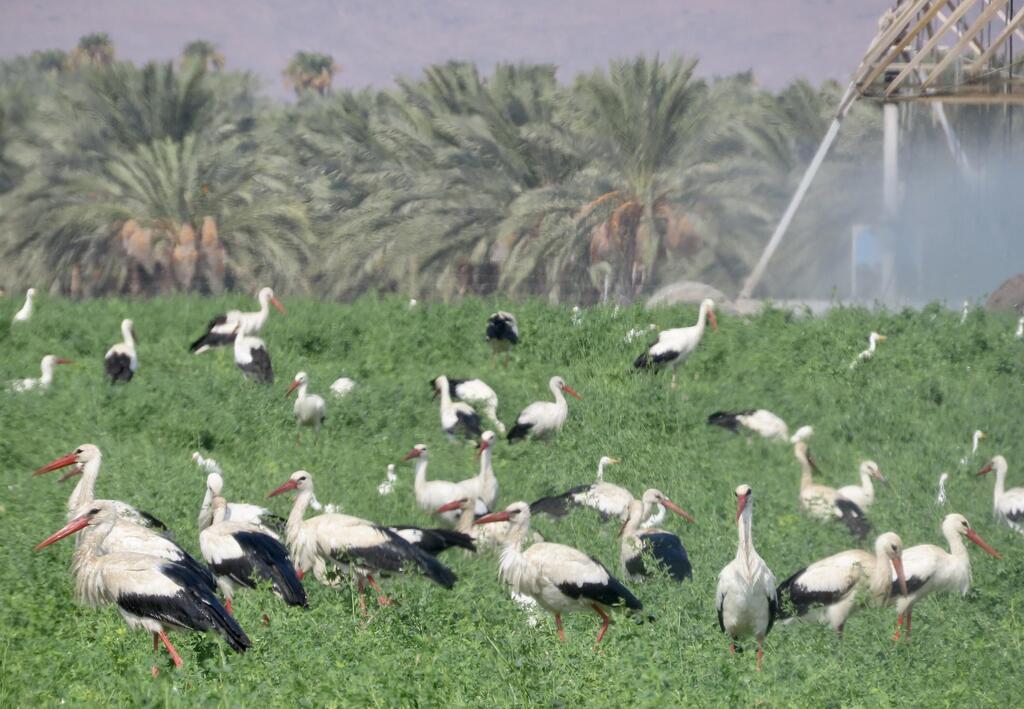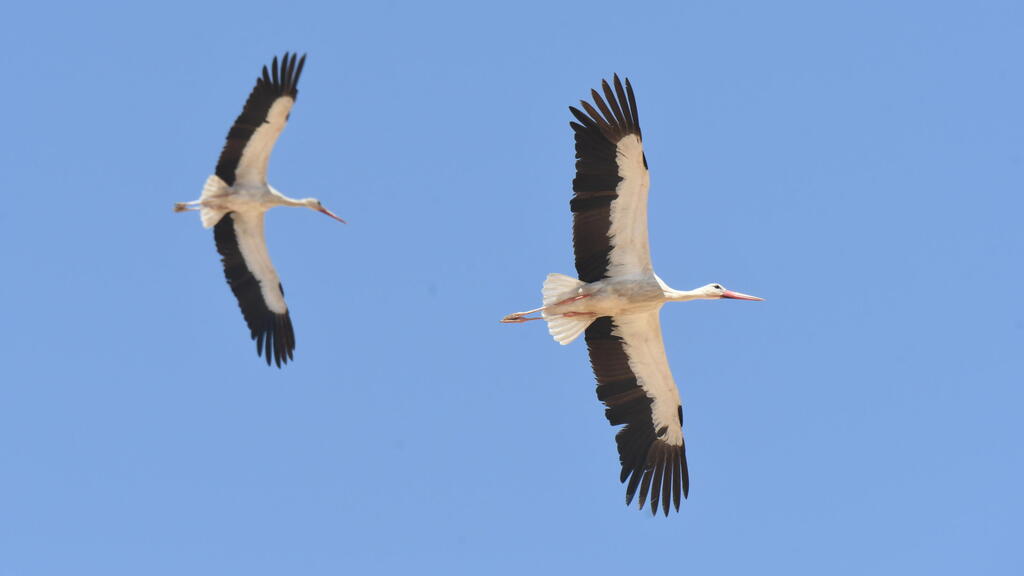White storks lounging around
(Video: Avner Rinot, the Society of the Protection of Nature)
With temperatures dropping ever so slightly and the summer heat becoming a bit less arduous, signs of autumn are already beginning to make their presence felt everywhere. This week, white storks, from the Ciconiidae family of storks, which began passing over Israel in early August during their migration south for the winter, have reached their zenith, blanketing the skies with massive flocks across most parts of the country.
Read more:
According to Noam Weiss, manager of the Eilat Ornithological Center, most of the white storks migrate from west of the Arava region and Eilat. However, this week, a huge flock of around 4,000 birds rose up from the desert near the southern Kibbutz Neot Smadar and set off on a path that stretches deep into the desert.
"The journey is quite challenging for the storks, especially the inexperienced young ones who are embarking on their first migration. A significant number of them stop and rest near the watercourses of the Arava, looking for a break and water. Some even pause in the heart of the desert to catch their breath. However, the scorching heat and fatigue make it difficult for some to press on. The Arava is anything but easy to traverse," he said.
Avner Rinot, a skilled ornithologist from the Society for the Protection of Nature in Israel, recently led a group in the Ma'ayanot Valley. During their excursion, they unexpectedly came across a flock of approximately 500 white storks. These birds skillfully avoided the valley's scorching heat by taking advantage of the irrigation sprinklers in the valley for a refreshing shower.
"By around 9 a.m., the outside temperature had reached 95°F, and it's clear that the storks were making smart choices. Some of them even grabbed a quick bite of toads and insects before setting off for another day of traveling hundreds of kilometers. Covering that distance in a single day's flight under the scorching heat is exhausting, and the storks always find joy in a refreshing shower. If it can be paired with a light meal, all the better," Rinot explained.
According to the Society for the Protection of Nature in Israel, the autumn migration path of storks spans from Eastern Europe and Western Asia to Eastern and Southern Africa. These migratory birds travel in large groups, often comprising tens of thousands of birds, utilizing thermal air currents to ascend and then swiftly glide to where their migration is headed.
2 View gallery


Enjoying some irrigation water
(Photo: Avner Rinot, the Society of the Protection of Nature)
Their migration pattern hinges on harnessing warm air currents, confining their travel to daylight hours and land routes, a preference that stems from the absence of thermal currents forming over the sea. As a result of our unique geographic position, serving as a narrow land bridge interconnecting Europe, Asia, and Africa, numerous storks opt to migrate across Israel.
The Israeli Society for the Protection of Nature website states that the white stork favors expansive and damp environments like irrigated fields, marshlands and ponds. However, they are adversely affected by alterations to their nesting locations, particularly those in wetland areas. Challenges include hunting, habitat degradation and the installation of new infrastructure such as high-voltage power lines, which can result in accidents and electric hazards.




